The National Museum of Italian Emigration (MEI), inside the Commenda di San Giovanni di Prè, was inaugurated yesterday in Genoa.In fact, in the past, many ships have departed from the port of Genoa, bringing Italians all over the world, but the museum will intend to tell the story of migratory phenomena with an eye not only on Italy, but on the entire globe. The National Museum of Emigration is in fact the result of months of work dedicated to a participatory project that has involved so many realities both Italian and from the rest of the world, through a strong synergy with numerous associations of Italians spread across all five continents. The choice of Liguria and in particular Genoa, among the various cities and regions that applied to host this important museum, was dictated precisely by the role that this city and its port have played in the history of Italian emigration. Moreover, the choice of the venue, namely the Commenda di San Giovanni di Prè, a 12th-century building, is pregnant with meaning: it has been for centuries a place of welcome and a point of passage for a humanity in transit, from pilgrims to crusaders to 19th-century emigrants.
The building came into being around 1180 at the behest of Brother William of the Johnite Knights, and was a place of assistance for pilgrims and crusaders preparing to leave for the Holy Land or returning. Among the guests were two popes: Urban V, during his journey to Rome in 1367, and Urban VI, who settled here for about a year between 1385 and 1386. The structure has now been renovated inside, thanks to functional and technological upgrades carried out in tune with the Superintendence of Liguria, made possible thanks to a substantial investment by the Mic and a contribution from Fondazione Compagnia di San Paolo. The intervention is a natural continuation of the Compagnia’s longstanding commitment to the Galata and the Memory and Migration Pavilion. That of the MEI is a project strongly desired by the Ministry of Culture, with the City of Genoa and the Region of Liguria, signatories of the Enhancement Agreement, as lead entities. An agreement based on the desire to build a migrant memory, a place for reflection on the themes of migration but also inclusiveness and integration. The MEI intends to offer itself as a container of the experiences that have characterized and still characterize the complex national migratory reality, taking into account the fact that migrations are a constant in human history and are also a distinctive feature of our country.
The exhibition is spread over three floors divided into sixteen areas, built around the life stories of the protagonists of emigration: the experiences of individuals are offered to the visitor through primary sources such as autobiographies, diaries, letters, photographs, newspapers, songs and music that accompanied the emigrants. These are documents that merge into a single narrative, showing the migration phenomenon in its many facets and articulations. The MEI aims to be a museum on the move, as the theme of the journey suggests, one that visitors will undertake among the images and stories of the millions of Italians who left our country. Migrants from different eras (from the Unification of Italy to the present) with their own story, people who faced the delicate moment of choosing to leave, deciding to leave behind their jobs, homes and families of origin.
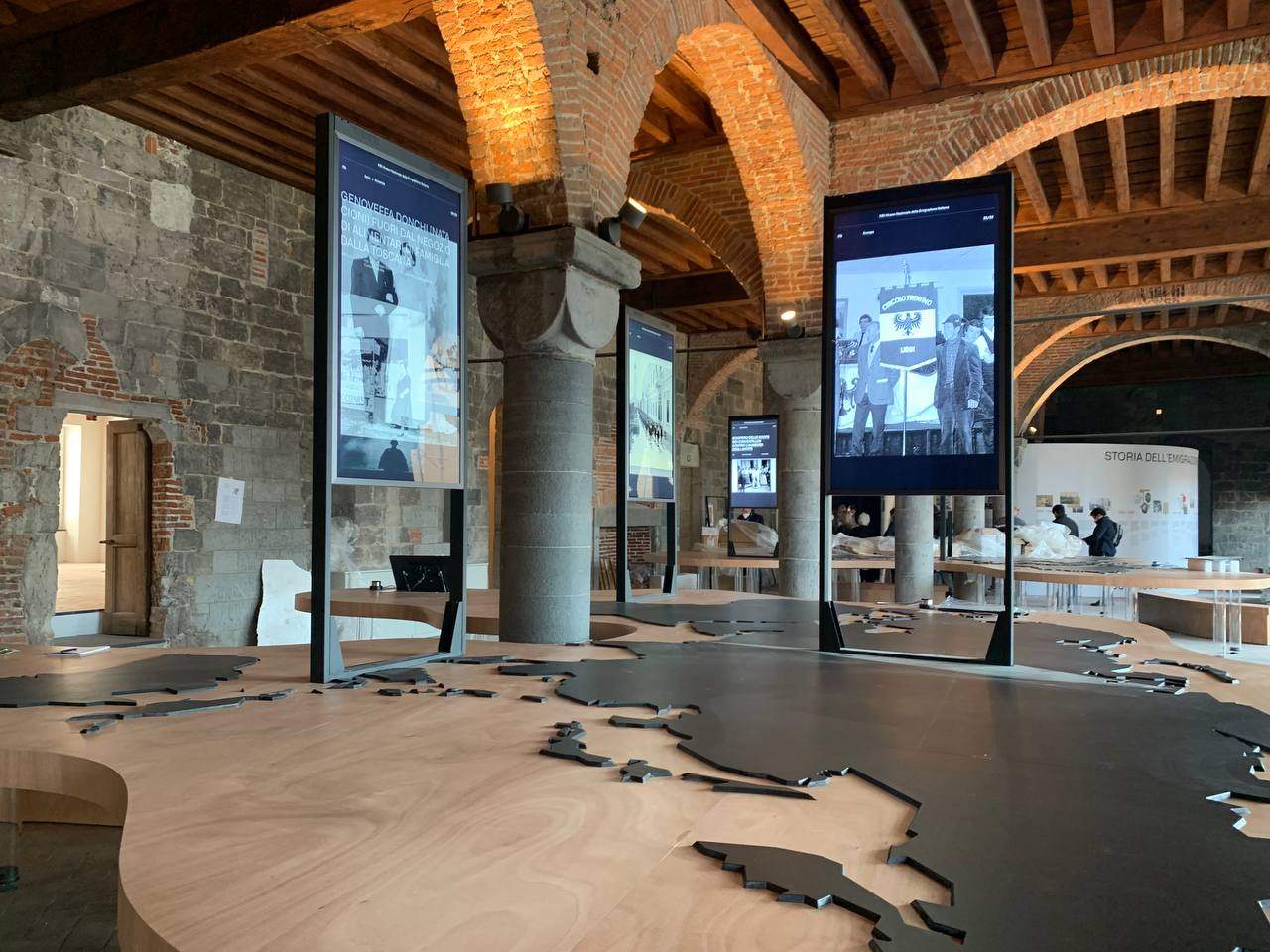
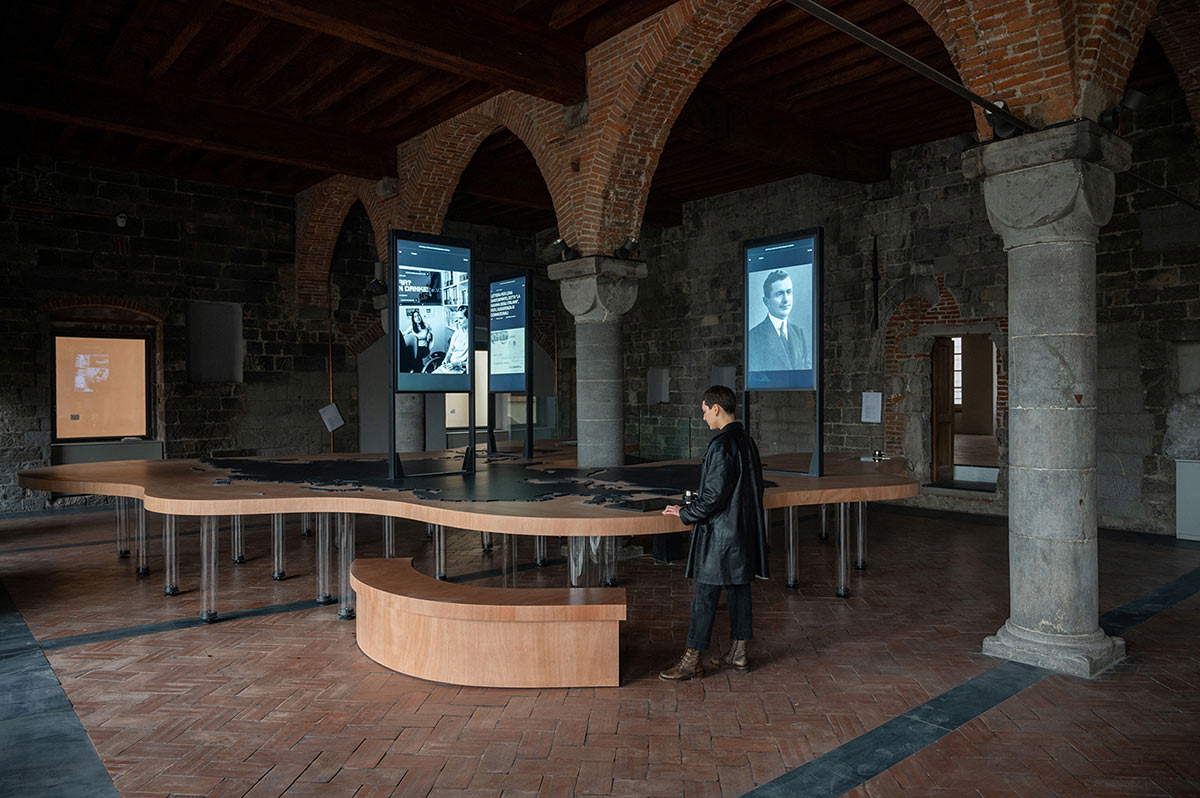 The National Museum of
The National Museum of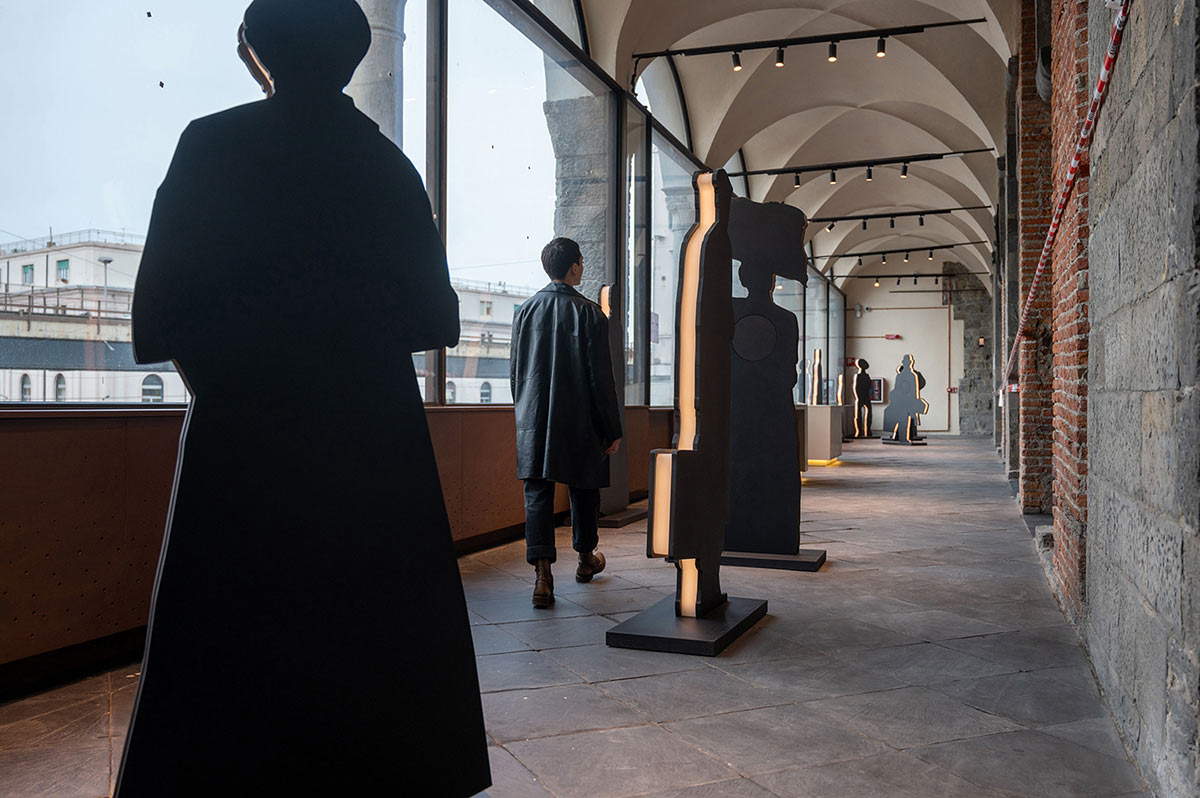 The National Museum of
The National Museum of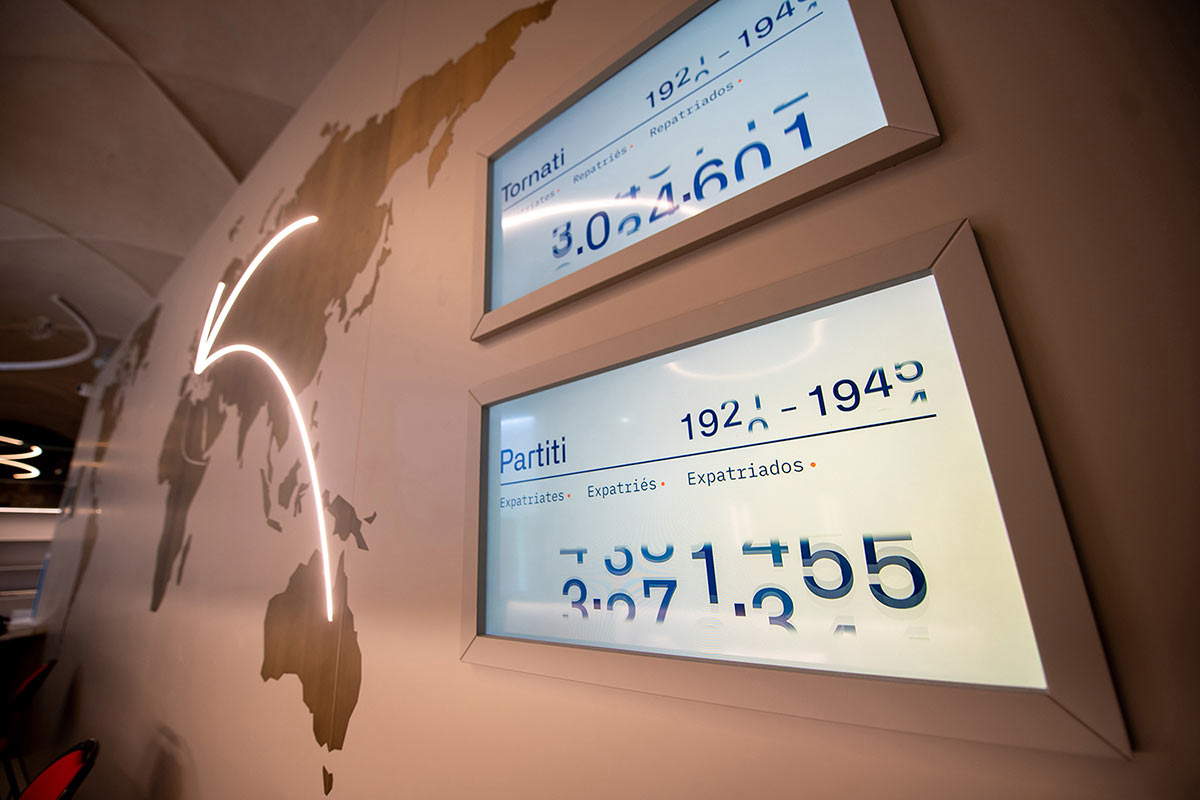 The National Museum of
The National Museum of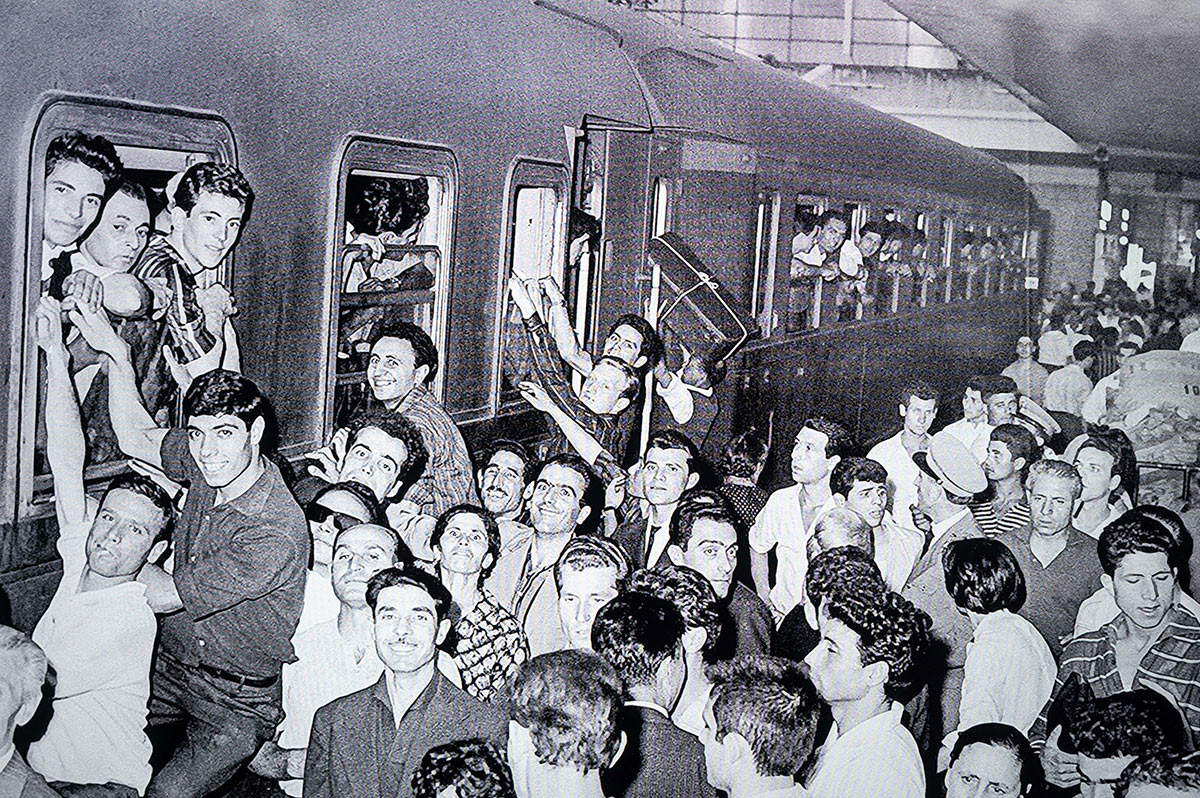 The National Museum of Italian
The National Museum of ItalianData on departures, returns, destinations, work, health, food, racism, reception, and the many different reasons for leaving Italy that make up the great mosaic of migration will be returned to the visitor through interactive and multimedia tools. If the journey is the focus of the exhibition at the Galata Museo del Mare, of which the MEI represents the continuation and completion, at the MEI the focus goes to what is found after the journey: the search for work and housing, learning a new language, fitting into a different and sometimes hostile society. The documents used to build the contents of the museum come from state and local agencies, institutions, archives, museums, and emigrant associations-a great network of collaboration that MEI has built, a large mosaic where each piece is an individual and community history of migration.
Each area of the museum introduces a period of human mobility, from prehistory to the medieval and modern ages, well before the diffusion of the concept of “border.” Italian emigration has not only had its destination abroad and does not only belong to the past. For this reason, the museum also recounts internal emigration, declined in its two major directions, from the countryside to the city and from the South to the North, and contemporary emigration, with the forms it took after 1973, the year of the epochal change, in which from a country of emigration Italy became a country of immigration.
Inside the museum there is also a space for reflection, the Memorial, an art installation with a planisphere showing the places of tragedies involving emigration: from the Sirius shipwreck to the Triangle fire in New York, from the events of Aigues Mortes to the Marcinelle massacre, passing through mining disasters and shipwrecks. The museum tour concludes with a reflection on internal mobility within the country and an initial presentation of migration over the past two decades, made in particular in collaboration with the Migrantes Foundation and based on studies published in the various Reports on Italians in the World.
The documents used are the result of research and studies with the collaboration of scholars and institutions such as the International Center for the Study of Italian Emigration (CISEI) in Genoa, the National Diaristic Archive Foundation in Pieve Santo Stefano, the Pietro Conti Regional Museum of Emigration in Gualdo Tadino, the Central Institute for Sound and Audiovisual Assets, the Istituto Luce - Luce Historical Archives, the RAI, through the Rai-Teche Archives, the Central State Archives and the Historical Diplomatic Archives of the Ministry of Foreign Affairs and International Cooperation. There has also been no shortage of contacts with international museums and centers such as the Ellis Island National Museum of Immigration, the MUNTREF -Museo de la Inmigración in Buenos Aires and the Museu da Imigração do Estado de São Paulo in São Paulo. A fundamental role is also played by the numerous associations of “Italians in the world,” a multiplicity of subjects often very active in international relations and with a strong impact on the communities of Italian expatriates.
An important and constructive dialogue has been developed with a prestigious institutional entity: the Directorate General of Italians Abroad (DIGIT) of the Ministry of Foreign Affairs and International Cooperation, and a memorandum of understanding has also been signed with the General Council of Italians Abroad (CGIE).
 |
| MEI - National Museum of Italian Emigration inaugurated in Genoa. |
Warning: the translation into English of the original Italian article was created using automatic tools. We undertake to review all articles, but we do not guarantee the total absence of inaccuracies in the translation due to the program. You can find the original by clicking on the ITA button. If you find any mistake,please contact us.